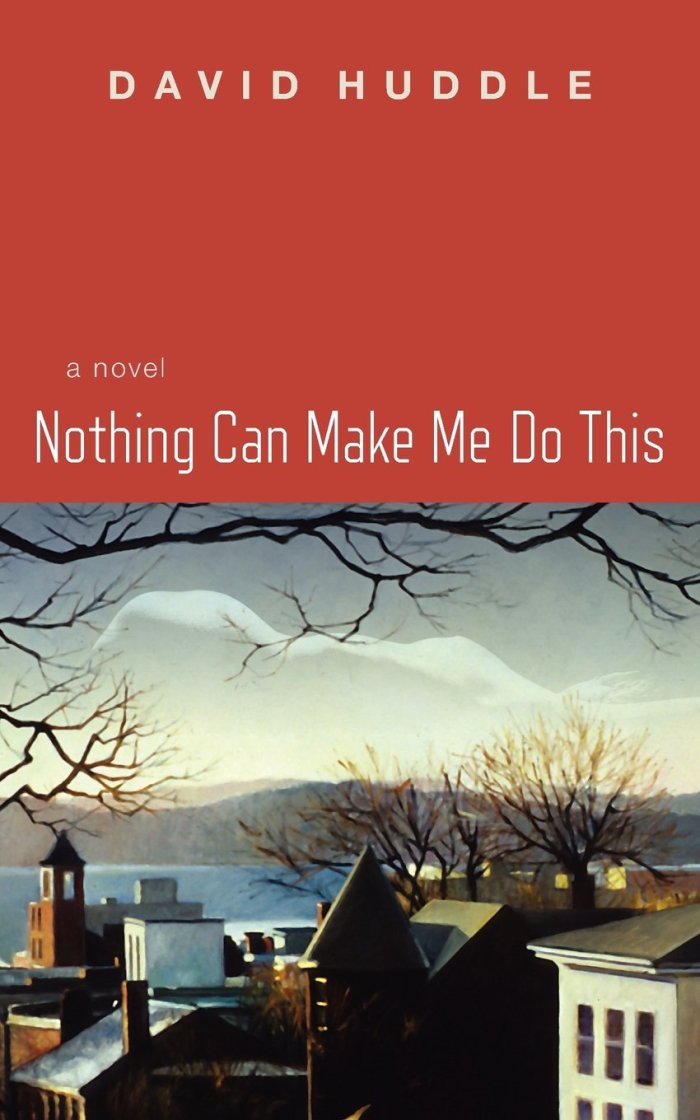Nothing Can Make Me Do This
David Huddle
Tupelo Press, 2011
344 pp. $19.99 (hardcover)
Reviewed by Sean Trolinder
Within the past few years, a resurgence involving collections with interconnected stories has taken place. Such a phenomenon has been around before, since books like the The Things They Carried (1990) and Jesus’ Son (1992) have used such techniques to become staples of their given form. However, two of the last four Pulitzer-Prize winners in Fiction—Olive Kitteridge (2008) and A Visit from the Goon Squad (2011)—have been interconnected short-story collections, so considering the success of these books, it is no surprise that David Huddle’s Nothing Can Make Me Do This (2011) tries a similar approach to gain popular traction within the difficult literary fiction marketplace. Though Tupelo Press marketed Huddle’s work as a novel, each chapter functions as its own short story, focusing on the perspective of either Horace Houseman or one of the characters that he associates with. Given Huddle’s choice to write interconnected stories, his book succeeds due to his unflinching take on human lust and his odd, yet complex characters.
For starters, Nothing Can Make Me Do This begins with a story entitled “The Way of the Blue-Winged Wangdoodle,” which is a told in the third-person limited point of view of Eve Collins, the granddaughter of Horace Houseman. Within this story, Eve discusses her grandpa’s porn collection, which her stepfather, Bill, owns after Horace dies. The story sets in motion some of the book’s key themes: family, secrets, and the body’s need for satisfaction. In “Doubt Administration,” Horace tells a story about a time when he was Provost at the University of Vermont and his kiss with Louise Cannizaro, the Dean of the Honors College, and how such an event could have impacted his professional life. The most intriguing aspect of this story is the introduction of his crazy, sarcastic friend Sonny, a computer science teacher at Saint Michael’s College, who tells the most interesting story of the collection in “High on a Hill,” which is about Sonny’s affair with Horace’s wife, Clara.
Though porn, flirtations, and affairs happen throughout Huddle’s book, two strange, complex characters really stood out—Bill and Sonny. In “Half Man,” Bill’s character seems to be the best-rounded, since as a boy, a casual moment with his brother, Robert, turns into a curious case of stalking a girl named Nadine, as he stands outside her window, watching her dance with a pillow dressed in dance attire. Within the story, Bill longs for a connection with Nadine, perplexed by the way she dances, but he does not understand how to approach the situation without coming off as creepy. After the story “High on a Hill,” readers begin to understand Sonny’s obsession with sex as it tells a story about a moment from his childhood that involves his Grandma Baumen, who might be brainwashing him with sexual undertones.
Despite Huddle’s ability to develop characters and take a “no holds barred” approach to the topic of lust, his prose has a tendency to sketch history, which hinders the pacing of his plot arcs. In “Hannah Outside In,” Huddle uses exposition to tell the story and rarely uses detail to push the dramatic tension, even though the story is supposed to be about Hannah’s affair with her college professor, Jerome Cummings. Also, “Doubt Administration” comes off as a long outline about Horace’s relationships with other people more than an actual story, whereas “Wages of Love” attempts to use voice to hide the fact that nothing is really going on for several pages in the book.
With that said, Nothing Can Make Me Do This is worth a read just for the stories “High on a Hill,” “Volunteer,” and “Half Man,” all of which are emotionally engaging tales told in the third-person limited point of views of Sonny and Bill. Also, for people who are into stories about affairs, sex, and lust, Huddle does not disappoint, since he considers these topics from multiple prospective. Moreover, the ambition of Huddle’s work cannot be denied, since these interconnected stories span over fifty years, offering a multitude of voices that center around the influences of their pasts. For young writers interested in gaining knowledge on how to market a short-story collection as a novel, David Huddle’s book demands a chance.
Buy from the publisher.
Buy from Amazon.
